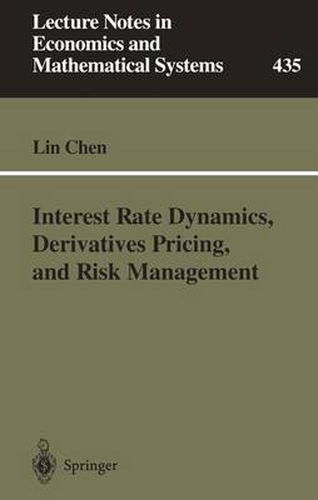Readings Newsletter
Become a Readings Member to make your shopping experience even easier.
Sign in or sign up for free!
You’re not far away from qualifying for FREE standard shipping within Australia
You’ve qualified for FREE standard shipping within Australia
The cart is loading…






This title is printed to order. This book may have been self-published. If so, we cannot guarantee the quality of the content. In the main most books will have gone through the editing process however some may not. We therefore suggest that you be aware of this before ordering this book. If in doubt check either the author or publisher’s details as we are unable to accept any returns unless they are faulty. Please contact us if you have any questions.
There are two types of tenn structure models in the literature: the equilibrium models and the no-arbitrage models. And there are, correspondingly, two types of interest rate derivatives pricing fonnulas based on each type of model of the tenn structure. The no-arbitrage models are characterized by the work of Ho and Lee (1986), Heath, Jarrow, and Morton (1992), Hull and White (1990 and 1993), and Black, Dennan and Toy (1990). Ho and Lee (1986) invent the no-arbitrage approach to the tenn structure modeling in the sense that the model tenn structure can fit the initial (observed) tenn structure of interest rates. There are a number of disadvantages with their model. First, the model describes the whole volatility structure by a sin gle parameter, implying a number of unrealistic features. Furthennore, the model does not incorporate mean reversion. Black-Dennan-Toy (1990) develop a model along tbe lines of Ho and Lee. They eliminate some of the problems of Ho and Lee (1986) but create a new one: for a certain specification of the volatility function, the short rate can be mean-fteeting rather than mean-reverting. Heath, Jarrow and Morton (1992) (HJM) construct a family of continuous models of the term struc ture consistent with the initial tenn structure data.
$9.00 standard shipping within Australia
FREE standard shipping within Australia for orders over $100.00
Express & International shipping calculated at checkout
This title is printed to order. This book may have been self-published. If so, we cannot guarantee the quality of the content. In the main most books will have gone through the editing process however some may not. We therefore suggest that you be aware of this before ordering this book. If in doubt check either the author or publisher’s details as we are unable to accept any returns unless they are faulty. Please contact us if you have any questions.
There are two types of tenn structure models in the literature: the equilibrium models and the no-arbitrage models. And there are, correspondingly, two types of interest rate derivatives pricing fonnulas based on each type of model of the tenn structure. The no-arbitrage models are characterized by the work of Ho and Lee (1986), Heath, Jarrow, and Morton (1992), Hull and White (1990 and 1993), and Black, Dennan and Toy (1990). Ho and Lee (1986) invent the no-arbitrage approach to the tenn structure modeling in the sense that the model tenn structure can fit the initial (observed) tenn structure of interest rates. There are a number of disadvantages with their model. First, the model describes the whole volatility structure by a sin gle parameter, implying a number of unrealistic features. Furthennore, the model does not incorporate mean reversion. Black-Dennan-Toy (1990) develop a model along tbe lines of Ho and Lee. They eliminate some of the problems of Ho and Lee (1986) but create a new one: for a certain specification of the volatility function, the short rate can be mean-fteeting rather than mean-reverting. Heath, Jarrow and Morton (1992) (HJM) construct a family of continuous models of the term struc ture consistent with the initial tenn structure data.